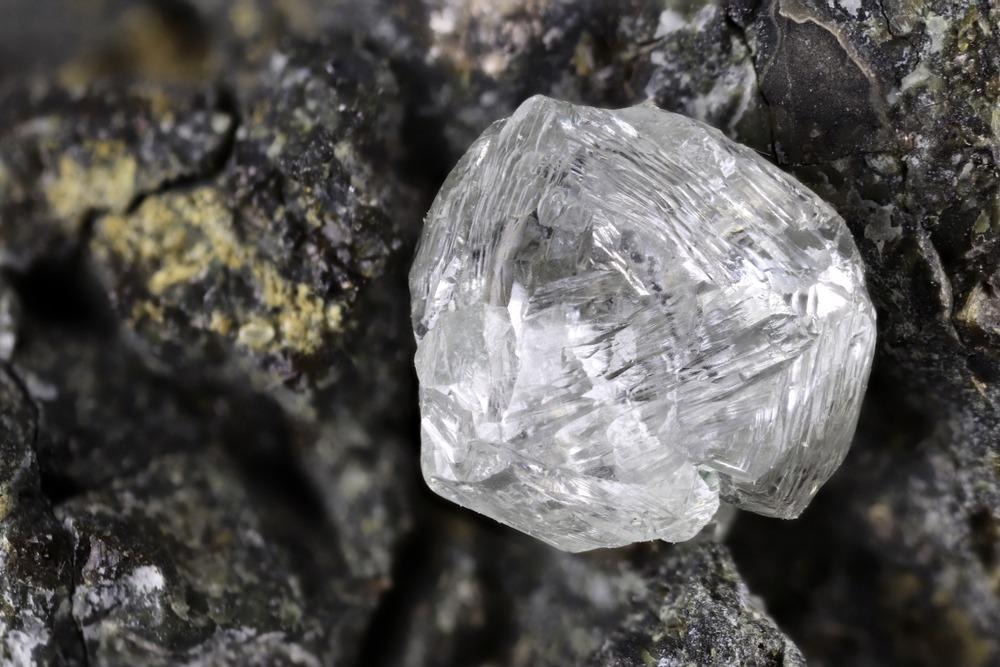A novel in situ transmission electron microscopy (TEM) investigation of prolonged slipping of diamond-like carbon (DLC) on diamond was made available as a pre-proof in the journal Carbon recently.

Study: Stress-dependent adhesion and sliding-induced nanoscale wear of diamond-like carbon studied using in situ TEM nanoindentation. Image Credit: Bjoern Wylezich/Shutterstock.com
By investigating the commencement of degradation for the hard condition of sliding on the diamond in suction, it was revealed how the tribological characteristics of amorphous carbon (a-C) approach their threshold.
Amorphous carbons, an extremely strong, hydrogen-free component of the DLC class, are of major scientific importance, but the methods by which degradation develops during the interfacial encounter are not well established. The use of real-time TEM scanning of the nano contact zone can reveal degradation processes and damages.
Significance of Diamond-Like Carbon (DLC)
Diamond-like carbon (DLC) is a strong, damage-resistant, and low-friction substance that has characteristics comparable to diamond despite being made up of a heterogeneous combination of sp2 and sp3 covalent bonds.
It is an economically significant substance, with a global marketplace worth billions of dollars and a strong growth rate. This is attributed to its widespread usage as a flexible coating material in a variety of applications requiring a strong, abrasion-resistant layer.
Coating piston tanks in high-performance automobiles, coating hard drives to avoid major loss from read-head failures, and extending the lifespan of cutting instruments and blades like vanes and rotors, as well as industrial trimmers, are just a few examples. DLC is also employed in orthopedic implants because of its biological properties, to decrease degradation and increase longevity.
What is Tribological Behavior of DLC?
Because of its unique characteristics, the tribological behavior of DLC has been extensively researched from macro to nano length scales. The surroundings and the structure of DLCs can have a big impact on their reduced abrasive wear characteristics.
To achieve lower wear and friction, hydrogen-free DLCs like tetragonal amorphous carbon (ta-C) normally involve some responsive atmospheric gas (such as moisture, oxygen, or hydrogen), whereas hydrogen-containing DLCs like amorphous hydrolyzed carbon (a-C: H) operate especially well in parched and suction environments.
Sliding behavior has been observed to be controlled by interlayer (wear-free) slipping governed by the area of contact and adherence in the minimal friction and wear domain. The variety of processes at work drives scientific research to better comprehend them.
A Novel Transmission Electron Microscope (TEM) study on DLCs
Although there have been a few in situ investigations of DLC's tribological behavior at the nanometer scale, only one research has employed in situ visual examinations of a DLC-diamond interaction; that study focused mostly on regular (adhesive) interaction, not prolonged slipping. The strong and neutral layer of diamond is particularly appealing as a counterface since it helps to verify that wear processes are limited to the other surface in contact.
The researchers present a novel in situ TEM examination of prolonged DLC sliding on the diamond in this article.
When evaluating impact force, TEM imaging of the interface enables the inspection of degradation, breakage, and a background of the contact location, all of which are crucial aspects to consider. In addition, macroscopic level surfaces make contact at nano and microscale imperfections.
Studying a nanoscale imprecision effectively depicts the basic unit of interaction. Tribological investigations of DLCs in vacuum are particularly interesting because they diminish or remove the involvement of reactive gaseous molecules causing friction and wear, allowing for a clearer interpretation of the underlying abrasive wear processes. Furthermore, some DLCs' excellent performance in vacuum circumstances underlies their usage in aircraft and other low-pressure situations, therefore investigating their behavior and limitations in a vacuum has tremendous technical importance.
Research Findings and Conclusion
In conclusion, the researchers discovered that adherence between nanoscale a-C-coated probe tips and diamond increased drastically with load applied during slipping, with adherence being extremely low at low pressures and quickly rising at high stresses.
The increased sliding rate also led to an increase in adherence. More generally, the findings demonstrate how, at the nanoscale, stress-induced surface covalent binding interactions may significantly alter adhesive bonding, well beyond van der Waals adhesion energies, implying strategies for boosting or perhaps managing adherence based on sliding behavior. These findings contribute to a growing body of research demonstrating that adhesion may be controlled using energetic inputs like stress and sliding rate.
Reference
Liang, J. H. et al. (2022). Stress-dependent adhesion and sliding-induced nanoscale wear of diamond-like carbon studied using in situ TEM nanoindentation. Carbon. Available at: https://www.sciencedirect.com/science/article/abs/pii/S0008622322002020
Disclaimer: The views expressed here are those of the author expressed in their private capacity and do not necessarily represent the views of AZoM.com Limited T/A AZoNetwork the owner and operator of this website. This disclaimer forms part of the Terms and conditions of use of this website.